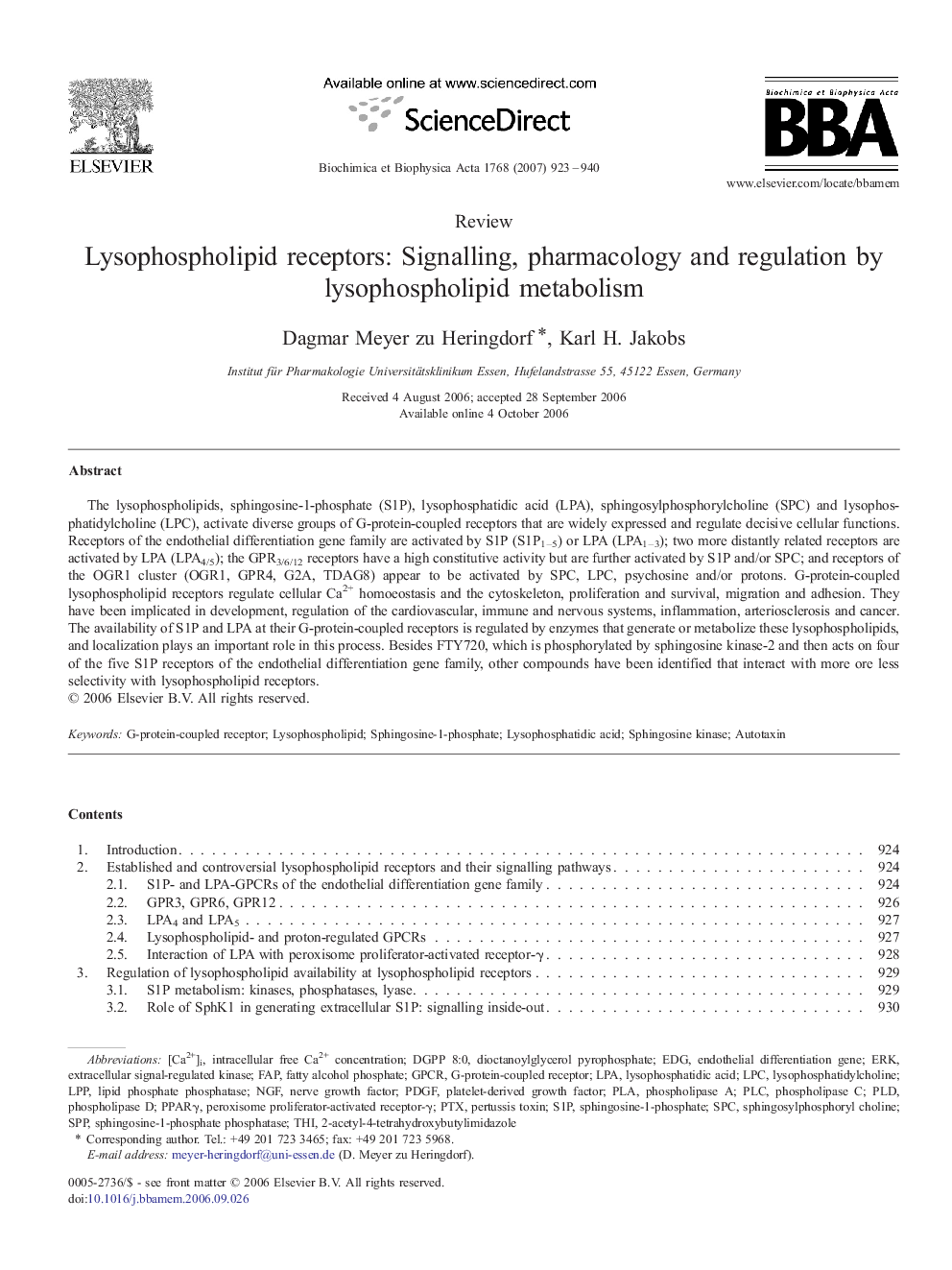| Article ID | Journal | Published Year | Pages | File Type |
|---|---|---|---|---|
| 1945775 | Biochimica et Biophysica Acta (BBA) - Biomembranes | 2007 | 18 Pages |
The lysophospholipids, sphingosine-1-phosphate (S1P), lysophosphatidic acid (LPA), sphingosylphosphorylcholine (SPC) and lysophosphatidylcholine (LPC), activate diverse groups of G-protein-coupled receptors that are widely expressed and regulate decisive cellular functions. Receptors of the endothelial differentiation gene family are activated by S1P (S1P1–5) or LPA (LPA1–3); two more distantly related receptors are activated by LPA (LPA4/5); the GPR3/6/12 receptors have a high constitutive activity but are further activated by S1P and/or SPC; and receptors of the OGR1 cluster (OGR1, GPR4, G2A, TDAG8) appear to be activated by SPC, LPC, psychosine and/or protons. G-protein-coupled lysophospholipid receptors regulate cellular Ca2+ homoeostasis and the cytoskeleton, proliferation and survival, migration and adhesion. They have been implicated in development, regulation of the cardiovascular, immune and nervous systems, inflammation, arteriosclerosis and cancer. The availability of S1P and LPA at their G-protein-coupled receptors is regulated by enzymes that generate or metabolize these lysophospholipids, and localization plays an important role in this process. Besides FTY720, which is phosphorylated by sphingosine kinase-2 and then acts on four of the five S1P receptors of the endothelial differentiation gene family, other compounds have been identified that interact with more ore less selectivity with lysophospholipid receptors.
